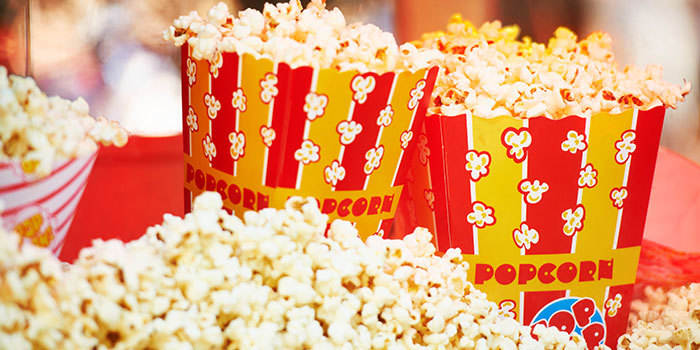FDA Announces New Calorie Rules

Last week, the FDA announced that movie theaters, amusement parks, vending machines, pizza places, and similar establishments across the country must start displaying calorie counts for the food they sell.
It’s a bold step into the last frontier of unlabeled food, where people are so into the moment it’s easy to forget that you’re even eating. Everybody knows that large popcorn with extra salt and butter “product” is not the healthiest item to choose from—but how bad can it be?
According to the diet and food-planning site, MyFitnessPal.com, a large popcorn from one of the major theater companies has 1030 calories and 579 mg of sodium. Even if you only eat half the tub, this is a huge snack, especially if it’s coupled with a soda or candy bar. (The best way to wash all that salt down is sugar, right?)
The reasoning behind the ruling is clear enough. Proper labeling on food might deter people from ordering that monster tub or persuade them to order one slice of pizza instead of two. “Americans eat and drink about one-third of their calories away from home…” said FDA Commissioner Margaret A. Hamburg, M.D. “Making calorie information available on chain restaurant menus and vending machines is an important step for public health…”
But before you hit the multiplex with your calorie counter in hand, keep in mind that even though the ruling is well intended, companies enjoy leeway when it comes nutritional information. For example, the FDA allows a 20% margin of error for calorie listings, as well as a rounding rule companies can use to list the information.
Despite the large variation allowed in foods, this ruling is a step in the right direction. The ruling even requires restaurants to list nutritional information for alcoholic drinks.
This type of labeling is shown to reduce calories. A study in 2008 analyzed Starbucks transaction data after the company started listing their nutritional information for their products. There was an average 6% caloric reduction after the posting.
That 6% could be a small amount, but through out the day it adds up. Even though nutritional information will never be 100% accurate (at least in our lifetime), this type of labeling can offer ballpark figures for those looking to lose weight. At the very least it will be a nice surprise to see your favorite morning drink has more calories than your lunch. Progress people!
